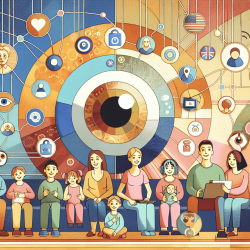Introduction
The intersection of gender and sport has long been a topic of scholarly interest, with significant implications for various fields, including speech-language pathology and online therapy services. The research article "Scholarship on Gender and Sport in Sex Roles and Beyond" by Knoppers and McDonald (2010) offers critical insights into how gender roles and sports have been conceptualized over the years. This blog post aims to help practitioners in the field of online therapy, particularly those working with children, to integrate these findings into their practice, thereby improving outcomes through a data-driven approach.
Understanding Gender and Sport
The research conducted by Knoppers and McDonald (2010) highlights the evolution of gender and sport scholarship over the past 35 years. It discusses the shift from viewing gender roles as fixed categories to understanding them as complex, socially constructed identities. This understanding is crucial for practitioners who work with children, as it encourages a more nuanced approach to therapy that considers the diverse identities and experiences of each child.
Implications for Online Therapy
Online therapy platforms like TinyEYE can leverage these insights to create more inclusive and effective therapy sessions. Here are some ways practitioners can implement the research findings:
- Inclusive Language: Use language that acknowledges the diversity of gender identities. Avoid binary language that may not resonate with all children.
- Customized Therapy Plans: Develop therapy plans that consider the child's interests, including sports, as a way to engage them more fully in the therapeutic process.
- Awareness of Gender Norms: Be aware of how traditional gender norms may influence a child's self-perception and participation in sports and other activities.
- Encouraging Participation: Encourage children to participate in sports and activities that interest them, regardless of traditional gender associations.
Encouraging Further Research
The article also calls for further research into the intersection of gender, sport, and other social factors such as race and class. Practitioners are encouraged to stay informed about ongoing research in these areas to continually refine their practice. Engaging with interdisciplinary research can provide a broader understanding of the factors that influence a child's development and participation in sports.
Conclusion
Integrating the insights from gender and sport scholarship into online therapy practices can lead to more personalized and effective outcomes for children. By considering the complex interplay of gender roles and sports, practitioners can better support children's development in a holistic manner. For those interested in exploring the original research paper, please follow this link: Scholarship on Gender and Sport in Sex Roles and Beyond.










